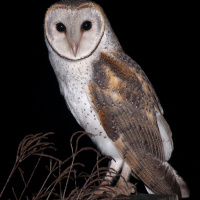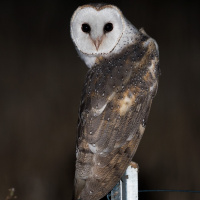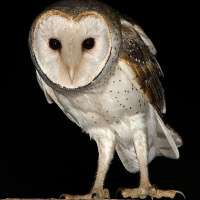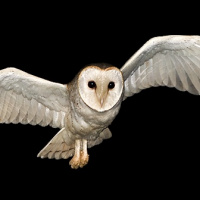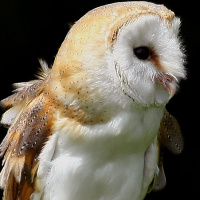Introduction
The Eastern Barn Owl is a medium sized owl with no ear-tufts and a heart-shaped face. It was formerly considered a subspecies of the Common, or Western Barn Owl Tyto alba.
Photo Gallery (7 pictures)
Information
Description: The facial disc is white with a brown edge, and with a brownish wash between the lower edge of the eyes and the base of the whitish-pink bill.
Eyes are brownish-black. The crown and upperparts are dark yellowish-brown to orange-buff, covered partly by a greyish-brown veil marked with scattered white spots surrounded by black.
The tail is similar, with a few darker bars and with white dots near the tips of the feathers.
Underparts are whitish or pure white coarsely spotted and with some V-shaped markings.
Legs are feathered white nearly to the base of the mostly bare toes, which are pale greyish-brown and dirty yellowish underneath.
Claws are brownish-black
Size: Length 30-36cm. Wing length 247-323mm. Tail length 110-127m. Weight 230-480g.
Habits: Generally nocturnal, although it is not uncommon to see this species emerge at dusk or be active at dawn. Roosts during the day in deserted buildings or trees with dense foliage. Flight is noiseless, with relatively slow wingbeats.
Voice: A drawn-out rasping screech similar to other Barn Owls.
Hunting & Food: Mainly small mammals such as mice, rates, voles and shrews. Will also take birds, bats, small reptiles, frogs and large insects. Eastern Barn Owls will hunt from a perch, but will also hunt on the wing, quartering fields and areas with rough grass.
Breeding: Similar to the Western Barn Owl. Nesting is in tree hollows, caves and abandoned buildings. The average clutch size is 3-6 eggs.
Habitat: Open forests and woodlands, farmland, bushy open country, grassland, rocky areas with caves, semi-deserts. Often near villages and cities.
Distribution: Asia from Asia Minor to central China and Indonesia, through to Australia and offshore islands. Introduced to New Zealand.
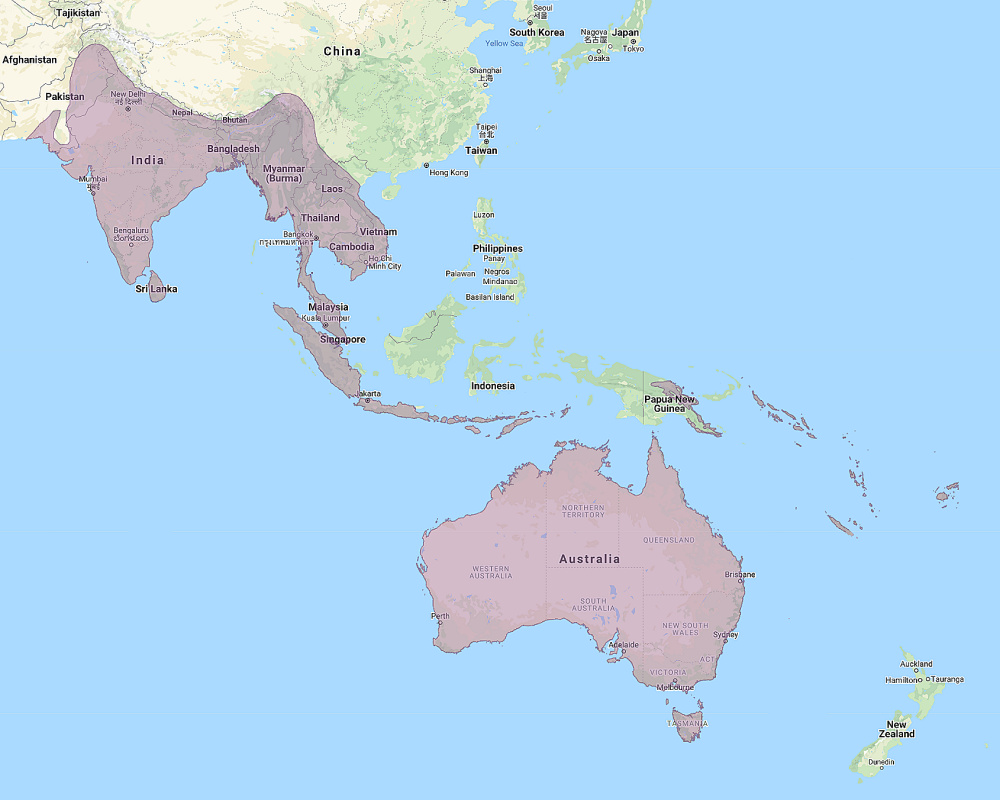
Range of the Eastern Barn Owl Tyto javanica
Status: Generally common and widespread.
Original Description: Gmelin, J.F. 1788. Systema Naturae, edito decimal tertia, 1, pt. 1, p. 295.

